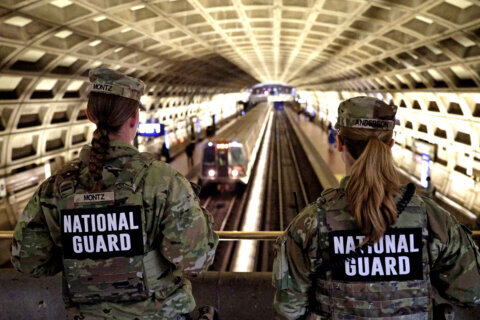This video is no longer available.
Drawing a straight line, the distance between Georgetown University and Joint Base Anacostia-Bolling is a little over five miles. If you hop in a car, it might take you 15 minutes to drive it, or if traffic is bad, it might take you 45 minutes or longer.
Digging your way there will take way longer through — roughly the next six years. But a project that would be every little kid’s imaginative idea on steroids is working to make that happen.
The Clean River project
The planning work started last year, and not only has D.C. Water turned a popular, and often bustling, corner of the Tidal Basin into a busy mess, it will stay that way for a long time.
But major changes are coming in the short term to open some of Ohio Drive again, and in the long term, the even bigger changes happening underground are all aimed at improving the Potomac River, and as the river flows downstream, the Chesapeake Bay.
Related coverage
D.C. Water’s new Potomac River Tunnel is its biggest and most expensive construction project ever.
It’s part of a federal consent decree with the Justice Department and Environmental Protection Agency that dates back to 2005, aimed at drastically reducing the estimated 654 million gallons of combined sewer overflows (rainwater runoff, as well as sewage and wastewater) that enter the Potomac River every year.
Every single gallon of those overflows impacts water quality by increasing bacteria levels. The western end of Ohio Drive just happens to be the perfect place for the work to begin.
Currently, the construction that’s underway is focused on building a new connection that will link Independence Avenue with Ohio Drive, since the current entrance at Ericsson Circle is now blocked off. Later this fall there will be a new road and a new traffic light at Independence Avenue, giving visitors to the Tidal Basin a second way to enter.
If all goes well, the project will take six years.
“It’s a five-and-a-half-mile tunnel going through a very, very, very, very high profile area,” said Moussa Wone, vice president of D.C. Water’s Clean River Project.
The project spans the National Mall, Kennedy Center, Watergate and Georgetown, finishing underneath where Canal Road passes Georgetown University. It comes at a massive cost, currently estimated at $820 million.
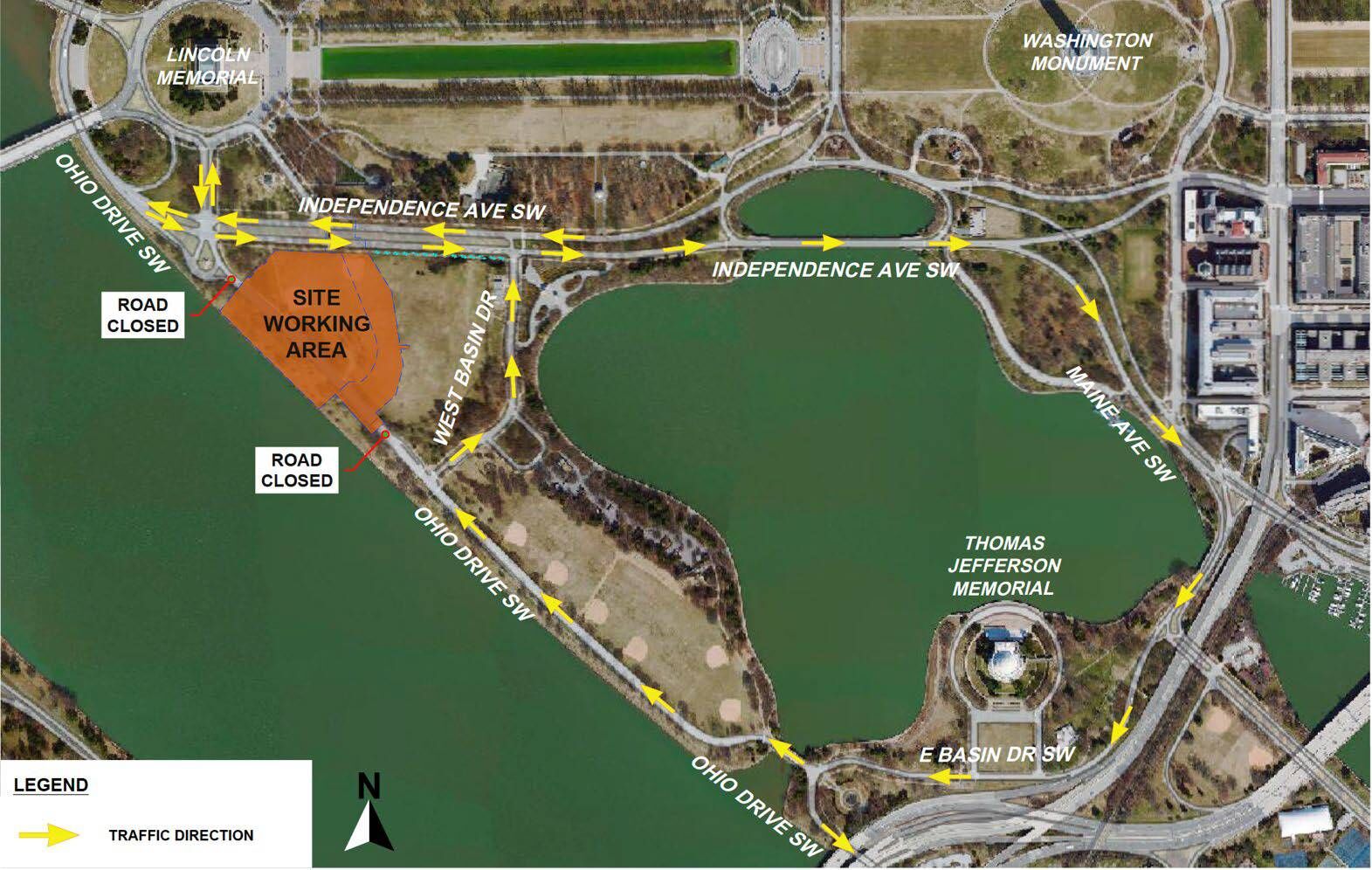
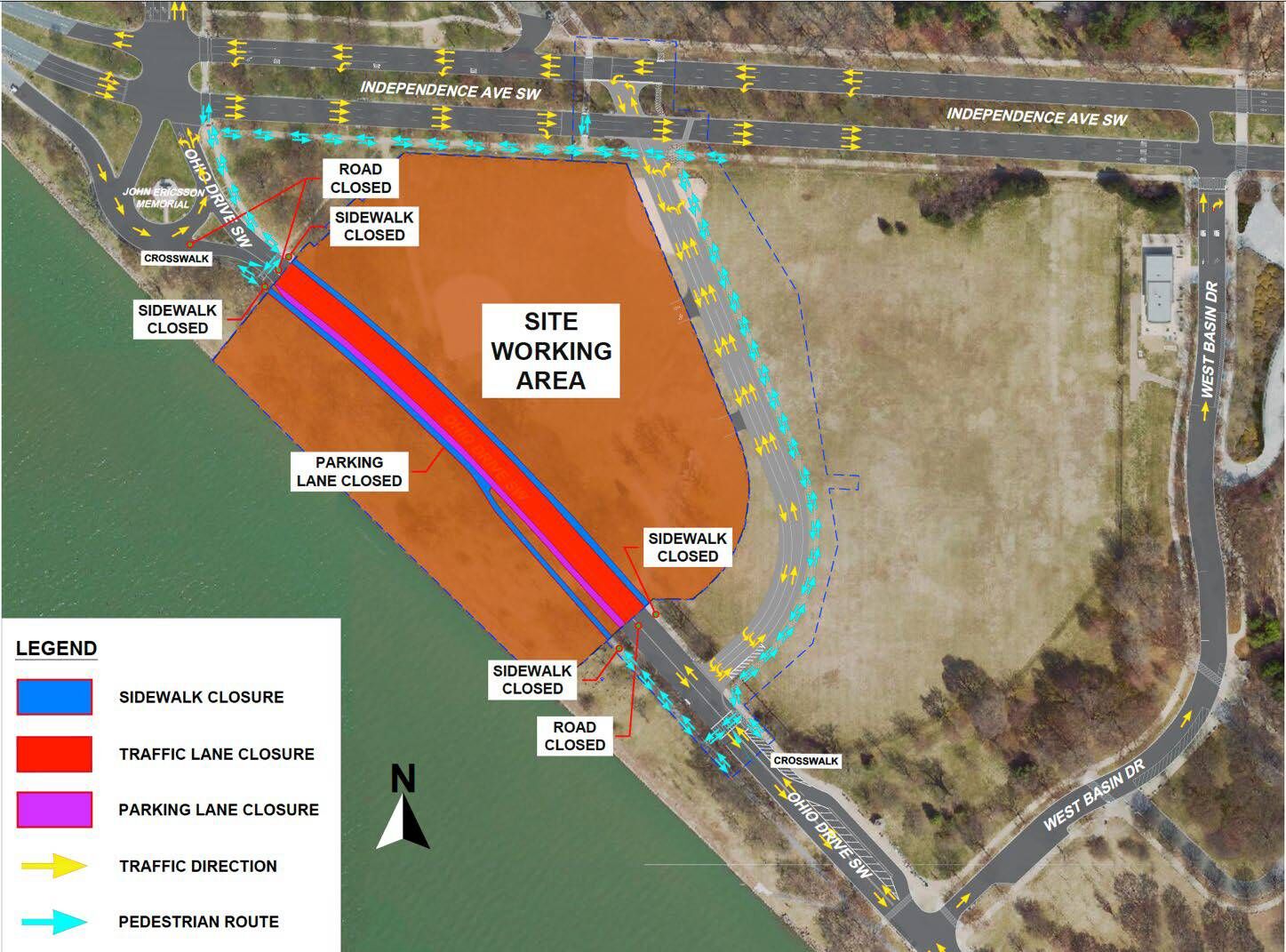
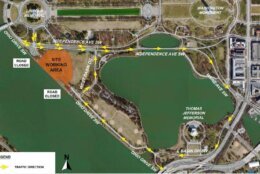
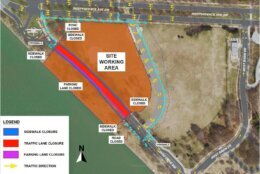
Why the Tidal Basin?
Around most of D.C., the ground is considered soft. But as you get closer to Georgetown, you find more rock underneath the ground. The Tidal Basin is one area where the softer ground meets the harder ground. It also provides enough space for a massive construction project to begin.
“It is very difficult to find a site of this size,” said Wone. “So we picked this one basically based on the geology.”
Wone said the National Park Service was immediately on board with D.C. Water’s request to dig there, and the utility promised when the project is done sometime in 2030, that area will look better than it did before the work began. Later this year, a whole lot of digging will begin.
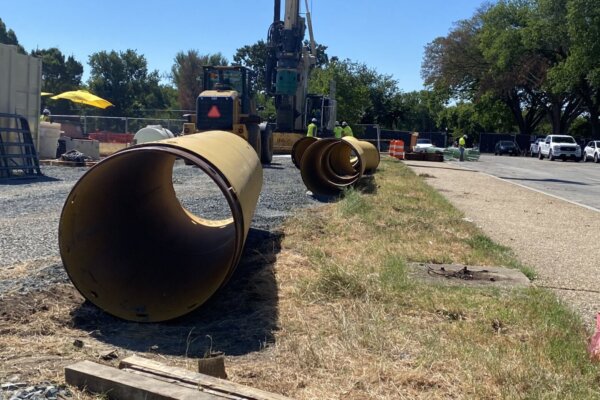
Eventually, it’ll be one big tunnel. But first two shafts will need to be dug, each dropping about 100 feet underground, so a pair of teams can start digging in two different directions.
“It’s not exactly at the middle,” Wone said about the point along Ohio Drive where all this work is happening.
But it’s close. Pointing where the western shaft will be, Wone added, “everything is rock. So that’s why we need a rock machine for that.”
Pointing slightly to the east of there, he said you’ll get a little bit of the rockier ground underneath, “but everything else is going to be in soft ground. That’s why we picked a tunnel boring machine that can mine in soft ground. That’s the reason we picked this site. And also because of its size.”
When all is said and done, the tunnel will stretch from Georgetown University to Joint Base Anacostia-Bolling, “where it’s going to be connecting to the Blue Plains Tunnel that we build as part of the Anacostia River tunnel system,” Wone said.
Right now crews are still preparing to dig the giant shafts that will allow workers, and the massive construction equipment that’s coming from as far away as Germany, to begin digging out the tunnels. And even with those massive machines, they’ll only be digging a little bit at a time.
“I will say 40 to 55 feet, that’s the average,” Wone said. “They can have better days or, you know, some days the production is just not there. Also, it’s different from rock and from soft ground.”
But while all that work is going on 100 feet underneath you, Wone said you’ll be oblivious to it all.
“Nobody will notice,” he said with a laugh. “I promise you that.”
Get breaking news and daily headlines delivered to your email inbox by signing up here.
© 2024 WTOP. All Rights Reserved. This website is not intended for users located within the European Economic Area.


